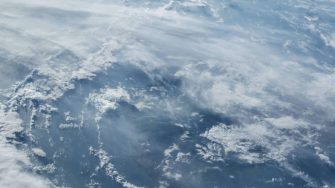
A greater understanding of low earth orbit
Space Situational Awareness (SSA) is the understanding of the very large number of objects in orbit around the Earth, the complex and dynamic environment that they orbit in, and their interactions with that environment. Such understanding is critical to space traffic management, collision avoidance and space domain conduct monitoring—all necessary to ensure our secure access to space-based technologies. UNSW Canberra Space performs research in the science of SSA, including space surveillance, space physics, astrodynamics and the application of machine learning to each of these fields.
Associated schools, institutes & centres
Impact
Our research capability and expertise in Space Situational Awareness includes space mission experience that quantifies the impact of astrodynamics on spacecraft in Low Earth Orbit (LEO).
We contribute to increased knowledge and preparedness within Defence regarding critical challenges relating to SSA.
Competitive advantage
UNSW Canberra Space is a global leader in SSA science research for a number of key reasons:
- We have developed physics-based numerical codes with which we study ionospheric plasma aerodynamics—the aerodynamic behaviour of charged objects such as satellites orbiting at high speed in the rarefied ionospheric plasma environment. Such effects can explain observed anomalous orbital behaviour, yet they are not taken into account in orbital analyses.
- We combine high-fidelity aerodynamic and space environment simulations with orbit propagators and advanced machine learning methods to study satellite formation control and space collision avoidance approaches.
- Our combination of space research and space mission capabilities enables us to use each of our cubesat mission to perform in-orbit research to support advances in SSA. This includes controlling the motion of the spacecraft with our space surveillance tracking telescopes and coupling our observations with numerical reconstructions of the astrodynamics.
Successful applications
UNSW Canberra Space’s applications of our SSA research include:
- using our optical and numerical SSA techniques to study the reflected-sunlight light curves that are generated due to various motions of the Buccaneer Risk Mitigation Mission spacecraft
- aero-assisted formation control strategies for the Royal Australian Air Force M2 dual satellite program
- applying our understanding of the physics of ionospheric aerodynamics to propose propulsion-free satellite de-orbit approaches from higher altitudes than normally thought possible
- multiple US Air Force Office of Scientific Research (AFOSR) grants for ionospheric aerodynamic research to enable improved orbital control of LEO spacecraft
- imaging the deployment of the Plant Flock 3p (the largest number of satellites launched on a single rocket in history) just two hours after launch
- obtaining light curve information on Plant Flock 3p cubesats, to assist international universities with understanding and troubleshooting the behaviour of their satellites
- assisting CSIRO and JPL in the analysis of data by applying the Tidbinbilla and Parkes very large radio telescopes as bi-static radar instruments for tracking near-Earth asteroids.
Partners
- Royal Australian Air Force (RAAF)
- Defence Science and Technology Group (DSTG)
- USAF Air Force Office of Scientific Research (AFOSR)
Study with us
Space Situational Awareness education is offered as both a fourth-year undergraduate engineering elective and as part of our delivery of the online Master of Space Engineering and Master of Space Operations programs.







